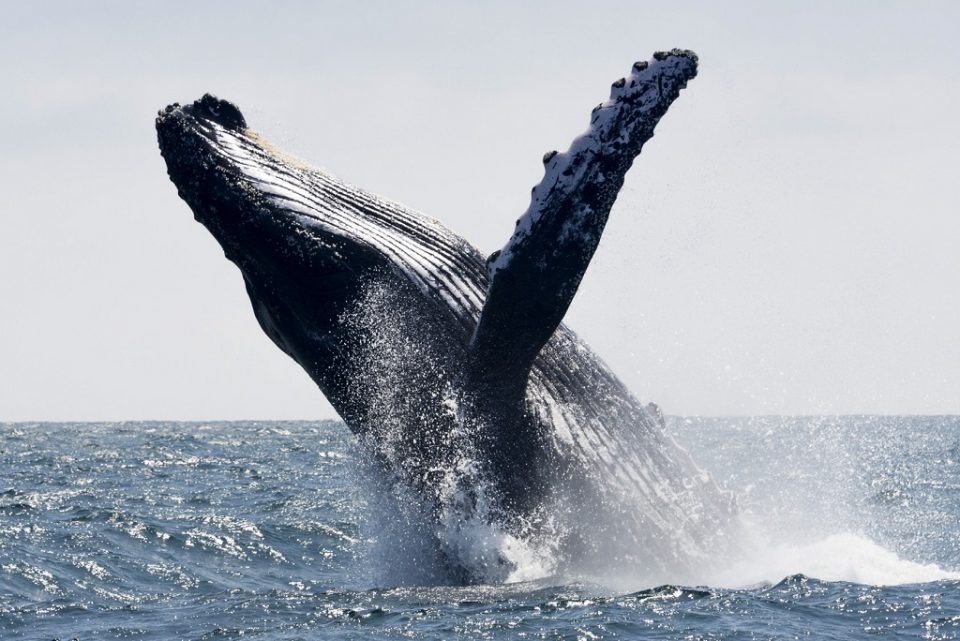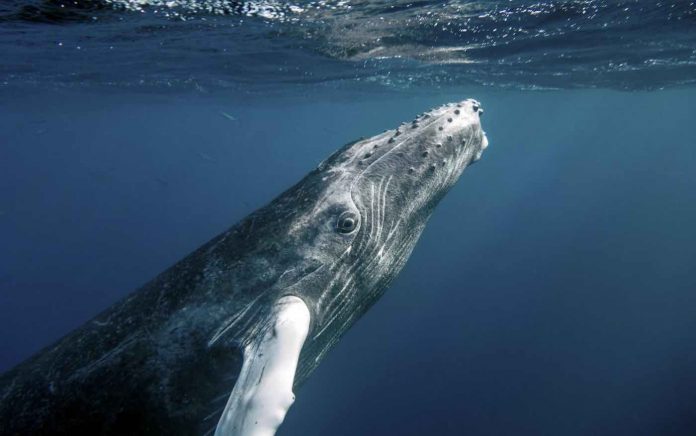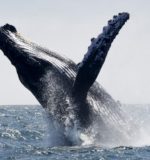Amidst all of the seeming-chaos and unfortunate news in the world, it’s heartening to hear that a marine species is not only bouncing back but thriving. New research shows that humpback whales in the South Atlantic have rebounded from the brink of extinction.
Due to intense pressure from the whaling industry in the early 1900s, populations of South Atlantic humpbacks diminished to just 450 whales total. An estimated 25,000 of the mammals were hunted within a 12-year span, reports GoodNewsNetwork.

In the 1960s, scientists noticed that the whale populations were declining worldwide. In the mid-1980s, the International Whaling Commission issued a moratorium on all commercial whalings. Further safeguards have since been approved to help the struggling populations.
Thanks to research co-authored by Grant Adams, John Best, and André Punt of the University of Washington’s School of Aquatic and Fishery Sciences, we now know that the species’ population (Megaptera novaeangliae) has rebounded to 25,000. According to conservationists, this estimate is similar to pre-whaling numbers.
“We were pleasantly surprised by the comeback; previous studies hadn’t suggested that humpback whales in this region were doing this well,” said Best.
The study was published in the journal Royal Society Open Science and refutes a previous assessment conducted by the International Whaling Commission between 2006 and 2015. The former study indicated that the population had recovered to about 30% of its pre-exploitation numbers. This newly-published data, however, provides more accurate information on catches, life-history, and genetics.

Photo by Christopher Michel, CC license
“Accounting for pre-modern whaling and struck-and-lost rates where whales were shot or harpooned but escaped and later died, made us realize the population was more productive than we previously believed,” said Adams, a UW doctoral student who helped construct the new model.
The authors are hopeful that the model built for the study can be used to determine population recovery in other species, as well. “We believe that transparency in science is important,” said Adams. “The software we wrote for this project is available to the public and anyone can reproduce our findings.”
Lead author Alex Zerbini, of the UW’s Joint Institute for the Study of the Atmosphere and Ocean, emphasized the importance of capturing population assessments without biases. He added that the findings are good news – an example of a species rebounding from near-extinction.
“Wildlife populations can recover from exploitation if proper management is applied,” said Zerbini, who completed this work at the NOAA Alaska Fisheries Science Center’s Marine Mammal Laboratory.








 Photographer Finds Locations Of 1960s Postcards To See How They Look Today, And The Difference Is Unbelievable
Photographer Finds Locations Of 1960s Postcards To See How They Look Today, And The Difference Is Unbelievable  Hij zet 3 IKEA kastjes tegen elkaar aan en maakt dit voor zijn vrouw…Wat een gaaf resultaat!!
Hij zet 3 IKEA kastjes tegen elkaar aan en maakt dit voor zijn vrouw…Wat een gaaf resultaat!!  Scientists Discover 512-Year-Old Shark, Which Would Be The Oldest Living Vertebrate On The Planet
Scientists Discover 512-Year-Old Shark, Which Would Be The Oldest Living Vertebrate On The Planet  Hus til salg er kun 22 kvadratmeter – men vent til du ser det indvendigt
Hus til salg er kun 22 kvadratmeter – men vent til du ser det indvendigt  Superknepet – så blir snuskiga ugnsformen som ny igen!
Superknepet – så blir snuskiga ugnsformen som ny igen!  Meteorite That Recently Fell in Somalia Turns Out to Contain Two Minerals Never Before Seen on Earth
Meteorite That Recently Fell in Somalia Turns Out to Contain Two Minerals Never Before Seen on Earth  Nearly Frozen Waves Captured On Camera By Nantucket Photographer
Nearly Frozen Waves Captured On Camera By Nantucket Photographer  It’s Official: Astronomers Have Discovered another Earth
It’s Official: Astronomers Have Discovered another Earth 